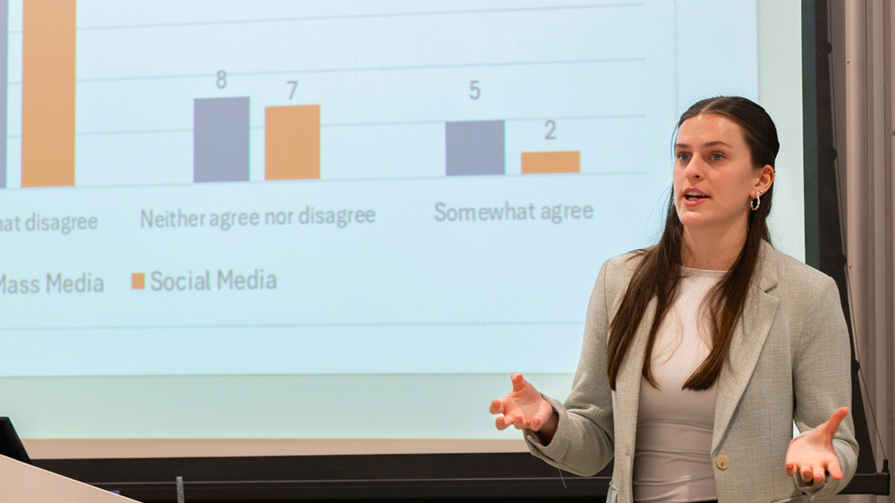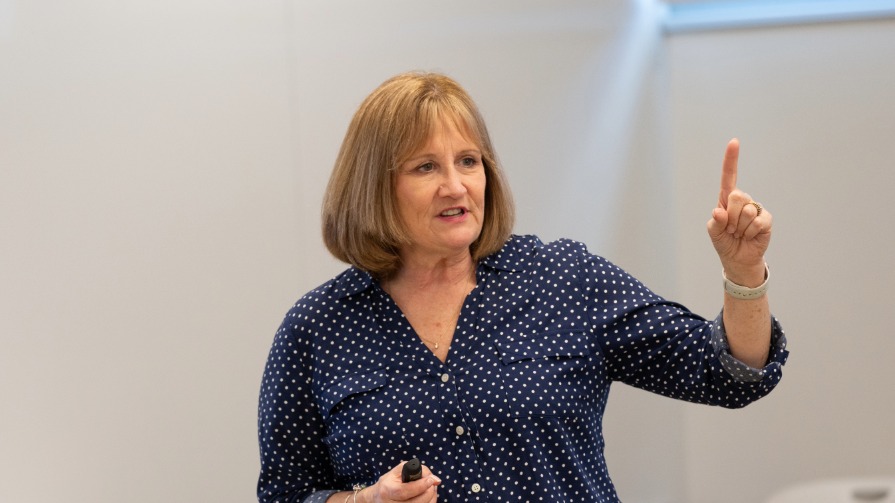It’s well known that liberals and conservatives have opposing views on many fronts – the structure of society, the role of government, the progress of the nation, and more. Recently a group of marketing researchers including Bryant’s own Sukki Yoon, Ph.D., Professor of Marketing, revealed that differences between liberals and conservatives can even be seen in their response to prosocial advertising messages, evidencing political ideology as a new tool marketers and advertisers may use to talk to consumers.
“The liberal-conservative spectrum has not been studied a lot in marketing,” said Yoon, who is an expert in prosocial advertising, specifically on uncovering how people respond to advertising messages and their consequences for social and environmental behaviors. “Part of the reason is, it’s messy. We want clearer topics like gender, age, etc. But also, it doesn't make a whole lot of sense, intuitively speaking: ‘Buy this because you are liberal.’ But counter-intuitively, it works.”
The studies
Many scholars suggest that ideological differences between liberals and conservatives are due to underlying psychological motives and tendencies. Research shows that liberals tend to be more open to change, are action-oriented, and show an interest in equal human rights and public welfare, whereas conservatives tend to resist change, prefer predictability, and value group-binding loyalty.
But no one had yet studied these ideas as persuasive messages, and in the prosocial advertising context. That’s where this team of researchers came in.
“The liberal-conservative spectrum has not been studied a lot in marketing. Part of the reason is […] it doesn't make a whole lot of sense, intuitively speaking: ‘Buy this because you are conservative.’ But counter-intuitively, it works.”
In one study, the research team, led by Younghwa Lee of Hankuk University of Foreign Studies, Seoul, Korea, explored how liberals and conservatives responded to a fictional advertisement that solicited donations to fictitious charity. The researchers hypothesized (and confirmed) that liberals were more persuaded when the message said they could receive a reward for their donation via random drawing (all have equal luck). Conservatives, on the other hand, were more persuaded when a charity donation message said that the reward would depend on the amount they donate (proportional).
In the second study (forthcoming in Asian Journal of Communication), using a fictional anti-tobacco campaign, the researchers hypothesized that liberals would favor messages that emphasize "how can I do it?" whereas conservatives would favor messages that emphasize "why should I do it?" Specifically, the researchers hypothesized (and confirmed) that liberals were more persuaded when the anti-tobacco campaign message emphasized that the policy is feasible (the how), whereas conservatives were more persuaded when the campaign emphasized that the policy is desirable (the why).
“Often whatever we’ve uncovered in the social environmental realm can be applicable to the commercial domain—especially in today’s environment," Yoon said. "To me it seems branding these days is about being a person — being ‘the good guy,’ and political ideology is just a higher level of this.”
For more information
The study “How liberals and conservatives respond to feasibility and desirability appeals in anti-tobacco campaigns” is forthcoming in Asian Journal of Communication. The study “How Liberals and Conservatives Respond to Equality-Based and Proportionality-Based Rewards in Charity Advertising” was published in Journal of Public Policy & Marketing, Spring 2018;37(1), available here: https://doi.org/10.1509/jppm.16.180.






